Before the advent of the soft-roader/crossover, SUVs were seen as tough, macho beasts that swilled fuel as they powered through dense, inhospitable climes. Sure, there were families and less rugged individuals who bought these things for the school run and the like, but the large size, poor driving manners on tarmac and horrendous fuel economy make it a daunting proposition to all but the most committed.
The unibody crossover changed all that – the fact that one could have the looks of a full-on SUV and the pretence of having an adventurous lifestyle, but with the ease of use and efficiency of a regular passenger car, drew in many customers previously put off by the truck-based versions’ rough nature. This left the latter to cater only to proper thrill seekers and those looking for a no-nonsense workhorse.
Recently, however, there seems to be new movement in the pick-up-derived SUV market. The two class stalwarts, the Mitsubishi Pajero Sport and the Toyota Fortuner, are due to be completely revamped quite soon, and later in the year we’ll see a new challenger in the form of the 2015 Ford Everest.
In the meantime, through, a new Japanese contender joins the ranks – the Isuzu MU-X will be launched very soon, with attractive pricing that undercuts its main rivals. It’s based on the D-Max pick-up, but will Isuzu’s gamble on the market bring it a similar amount of success in Malaysia? We drive the new seven-seater SUV up Cameron Highlands and back to see if the new pretender has what it takes.
For a start, there will be two variants offered – 4×2 and 4×4, both powered by a 2.5 litre turbodiesel. The 4×2 is priced at RM151,945 on-the-road inclusive of insurance and GST, while the 4×4 as tested here retails at RM164,970. For comparison sake, the base two-wheel drive Pajero Sport GL is over RM3k more expensive, and both the Fortuner 2.5G and 4WD Pajero Sport VGT’s price tags are beyond the RM170k mark.
Besides sharing the platform and much of its components with the D-Max, the MU-X is also a close kin to the Chevrolet Trailblazer/Holden Colorado 7. In terms of looks, it’s the Japanese version that takes the cake with a sharper, more angular face, as well as a more aggressive rear-end treatment.
Despite looking almost identical to the D-Max from the front at first glance, a closer inspection reveals that the front end is actually completely different. The headlights, grille, front air intake arrangement; they’ve all been reprofiled ever so slightly for a more streamlined and athletic appearance. Not too sure about the grey two-tone scheme, however – it looks off in combination with darker colours, especially black.
In this writer’s eyes, the MU-X is a better looker than both the Fortuner and the Pajero Sport, its pick-up roots much less apparent thanks to fuller surfacing and more pleasing proportions. It’s going to look a quite a bit outdated when the Everest rolls in, however – the Ford features a better resolved side profile (the MU-X’s odd upswept window line does it no favours whatsoever) and a sleeker, more sophisticated look altogether.
Exterior-wise, this higher-spec 4×4 variant distinguishes itself through larger 17-inch wheels (the 4×2 gets 16-inch items, but in a similar six-spoke design), LED daytime running lights, a tailgate spoiler and a chrome tailpipe finisher. With such minor differences, it’s going to be fairly difficult to tell the two apart on the road.
Measuring 4,825 mm long and 1,860 mm wide and tall (yes, it’s square), the MU-X is considerable larger in all dimensions than both the Pajero Sport and the Fortuner; its 2,845 mm wheelbase is also longer than either the Mitsubishi or the Toyota.
The large dimensions make themselves apparent inside, as the MU-X feels plenty spacious. The high-set seats make entry a right pain, but provide a commanding, all-seeing sitting position once you get in. The tilt-adjustable steering wheel can’t be set quite high enough, however.
Shared with the D-Max, the dashboard features a simple, toy-like design that nevertheless is bound to withstand the test of time thanks to the hard yet hard-wearing plastics and impressive build quality. There’s plenty of storage space too, at least up front – there are dual glove boxes, cupholders under the air vents on either side (in addition to the two aft of the gear lever) as well as a lidded cubby hole atop the dash.
All models get leather upholstery, a multi-function leather-wrapped steering wheel, a large, comprehensive multi-info display in the instrument cluster, Bluetooth connectivity and six speakers; the 4×4 model adds cruise control, a Blaupunkt Android-based touchscreen navigation system with DVD player, automatic climate control and an eight-way power-adjustable driver’s seat.
Legroom on the second-row seats is fair, but there’s an abundance of head- and shoulder room, and the backrest can be reclined quite a fair bit (although a sliding function wouldn’t go amiss). There’s air vents on for both second and third rows on the roof, too, with a fan speed controller on the second row; a factory-fitted roof-mounted display for the DVD player up front is only available on the 4×4, however.
Stow the 60:40-split second row (fold the seats and they tip over just a little bit to help you tumble them, which is nice) and you’ll find a pair of seats that, surprise surprise, actually provides a decent amount of legroom even for adults. Here, perched higher up than on other pews, it’s headroom that the bigger issue – I’m 173 cm tall and my head brushes the headliner in the third row.
With all the seats up, the boot measures just 253 litres; folding both second and third rows boosts space to 1,830 litres. But that’s not the whole story – the third row doesn’t stow flush with the boot floor, creating an uneven loading bay. Isuzu’s solution is a partitioned storage box on the 4×4; this does raise the load area, however, forcing you to lift cargo just that little bit higher. A tonneau cover is exclusive to the 4×4.
Safety equipment is identical on both 4×2 and 4×4 models – just two airbags up front, but ABS with EBD and brake assist, Isofix child seat anchors on all three second-row seats and stability control are all standard fit. The electronic safety net is a particularly welcome feature, as both the Pajero Sport and the Fortuner do away with it entirely.
Under the bonnet sits Isuzu’s 2.5 litre iTEQ four-pot diesel with a variable-geometry turbo, pushing out 134 hp at 3,400 rpm and 320 Nm from 1,800-2,800 rpm. In the output stakes, that’s 10 hp and 23 Nm less than the Fortuner 2.5G, as well as 42 hp and 30 Nm down on the Pajero Sport 2.5 VGT. Don’t forget, also, that the new Everest produces 158 hp and 385 Nm from a 2.2 TDCi mill.
The sole transmission option is a five-speed automatic with sequential shifting, the latter operated through the gear lever. On the 4×4 model, the part-time four-wheel drive is switchable on-the-fly at speeds of up to 100 km/h, with low-range only selectable at a standstill – par for the course for the segment, but the selector is a neat Terrain Command rotary dial from the D-Max, rather than the old-fashined stick on other rivals.
Out on the road, the MU-X feels a little out of its depth, its shortage of oomph particularly apparent on the windy uphill stretches throughout the hill climb. Low-end torque is adequate, and it comes in so low down that it makes the SUV very tractable in urban environments; ask for more brisk progress, however, and it struggles, often requiring a downshift in manual mode to keep things on the boil.
Speaking of which, the gearbox really helps the MU-X along, the five-speeder being smooth and responsive throughout. An adaptive grade logic sensor enables it to sense downhill gradients and downshift automatically, saving fuel and brake wear. And amazingly for a such a leisure-minded vehicle, in manual mode it holds to the selected gear all the way to the redline.
The engine is quite gruff – emitting the typical diesel clatter at low revs – and is quite noisy when fully extended, but it settles down very nicely at a cruise, aided by the laid-back transmission. Wind and tyre noise are kept reasonably muted, too, for such a bulky vehicle on knobbly tyres; most impressively, despite being worked hard up Cameron Highlands, our fuel use still managed to dip below the 10 litres per 100 km mark.
It’s the MU-X’s road manners where things start to go a little sour. Like most pick-up-based SUVs on the market, it’s fitted with coil-sprung five-link rear suspension (independent double wishbones with coil springs at the front); Isuzu promises improved comfort, handling and stability with such a setup.
Even so, the ride can get quite unruly on tarmac – even mild undulations can cause the body to bounce, while ruts, bumps and potholes send strong thuds through the ladder frame. Drive it spiritedly and the MU-X wallows into the bends, with a lot of roll and a lack of finesse in its body movements, and while the four-wheel disc brakes serve up a prodigious amount of stopping power, a mushy pedal further limits confidence.
Low levels of grip from the Bridgestone Dueler H/T 840 tyres only serve to amplify the effect; understeer is ever-present, even at moderate cornering speeds. The steering delivers a surprising amount of feedback – thumping over catseyes and the like – but is otherwise slow and vague, with the excessive heaviness during low-speed manoeuvres and large turning circle in particular showing up the Isuzu’s truck roots.
That said, the MU-X is definitely not without its merits – its excellent fuel consumption follows in the tradition of the D-Max, long an efficiency champion. It should be noted, too, that while the recalcitrant steering and soft suspension may not win it any favours on the road, combined with the 230 mm ground clearance and impressive approach and departure angles it should claw back some of the deficit off the beaten track.
If all you’re looking for is something that will easily and comfortably shuttle your kids to school every day, it goes without saying that you should probably look elsewhere. For those who regularly venture beyond the confines of our road network, however, the MU-X might be able to provide the kind of all-terrain capability you need, all while achieving the fuel economy that will shame many cars of much smaller size.
Added to that, the competitive pricing will almost certainly get buyers to sit up and notice, especially given the comprehensive kit on offer on both variants. Yes, it’s rough, gruff and uncouth on normal roads, but for rufty-tufty families that actually embark on the adventures so often hinted at in SUV marketing materials, the Isuzu MU-X might just be the right kind of tool.
Looking to sell your car? Sell it with Carro.

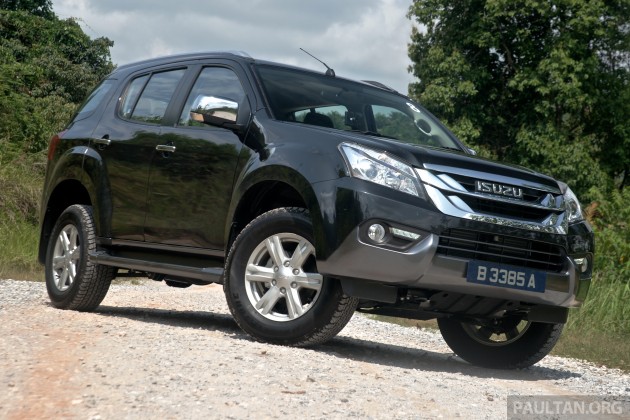
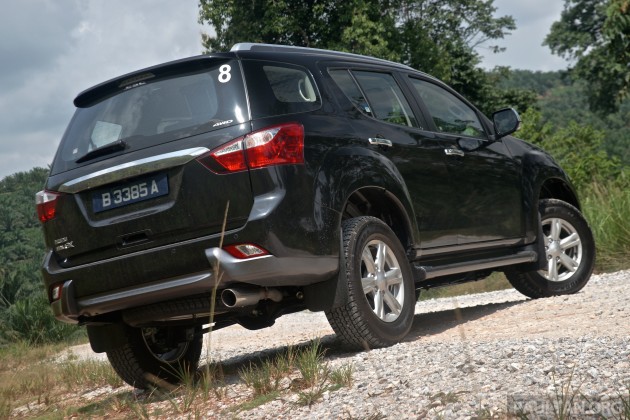
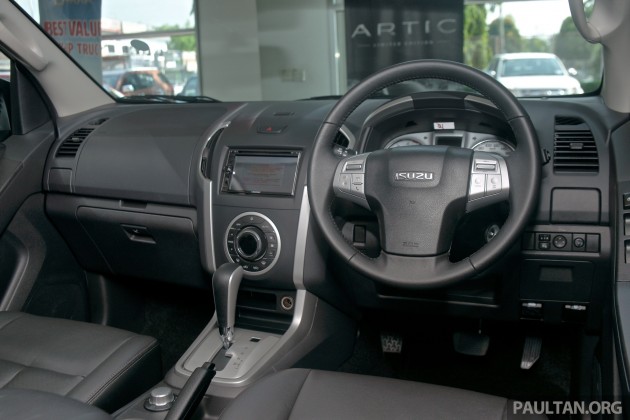







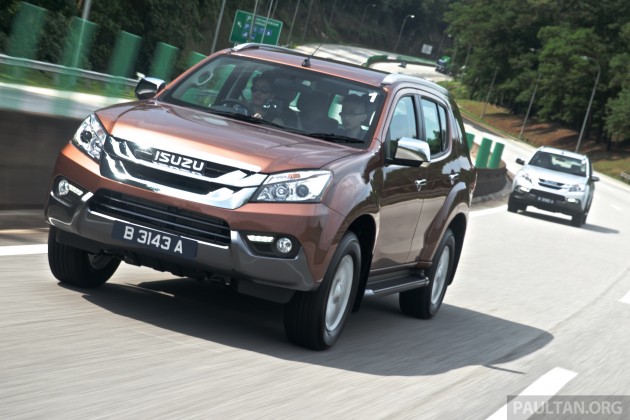
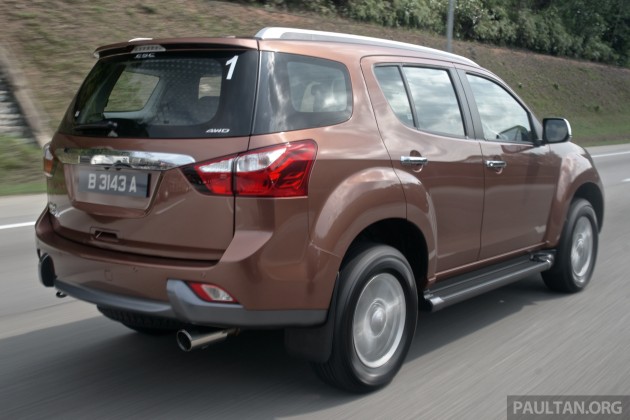
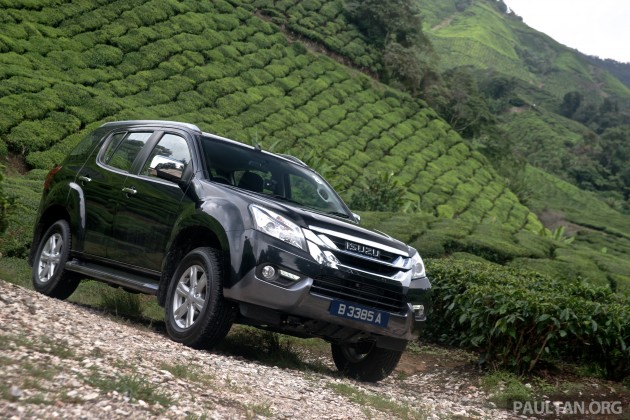
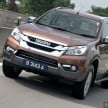
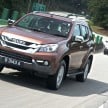
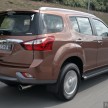
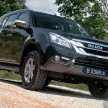
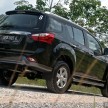
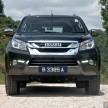
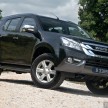
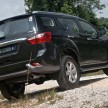
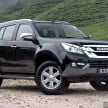

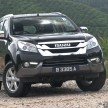
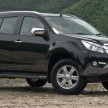
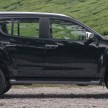
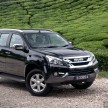
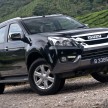

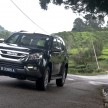
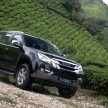
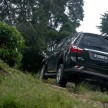
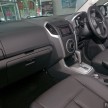
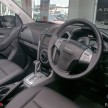
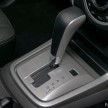
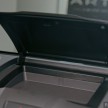
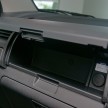
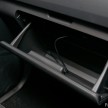
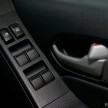
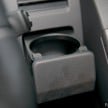
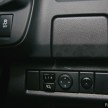
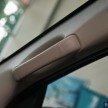
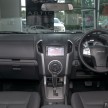
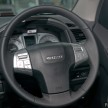
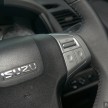
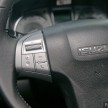

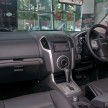
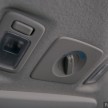
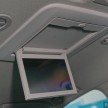

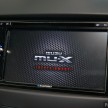
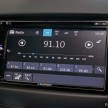
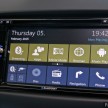
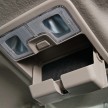
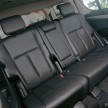
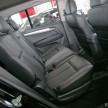
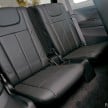
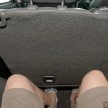
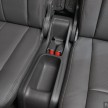
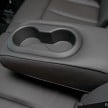
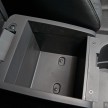
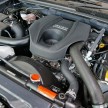
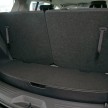
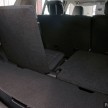

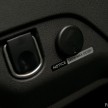
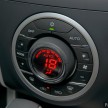
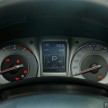
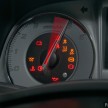
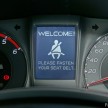
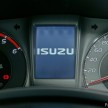

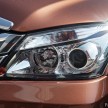
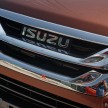
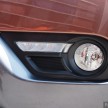
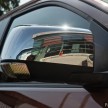
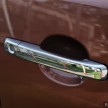
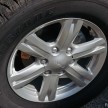
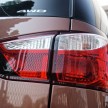
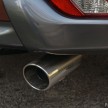
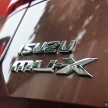
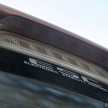


“…the Pajero Sport and the Fortuner do away without it entirely.”
You probably meant “do away with it entirely”.
Otherwise, well-written article. I guess the most groundbreaking thing that the MU-X brings is stability control for this kind of vehicle.
Ah yes, thanks for the spot, was wondering why it didn’t read right. It’s been amended.
Is this junk free from takata32 airbag virus infection?
You’re most welcome!
6 airbags
Calipers
Underbody protection.
Shrapnel included?
Some other reviews do mention that the dampers are stil work in progress for msian market.. And the tunimg has not been finalized yet…
No one buys these things for handling prowess, i thing the fact the ting is big huge n lots of metal for the money, plus isuzu’s known reliability, its gonna be sold in good numbers judging by how many stupid fortuners u see on da roads
1) Nice one Isuzu, hope this will sell well than the Fortuner and Pajero Sport.
2) regular DMAX costs RM90+. Since it is truck based, why does it cost RM150+? Is the taxation for pick up trucks and SUV different? That’s a whole RM50k+ more!
3) 7-seater, but only two airbags?
4) Refreshng to hear it comes with ESP TC, unlike its truck based competitors
5) I welcome Ford’s good looking Everest to better the specs and priced it cheaper
6) The interior looks comfortable to carry seven people.
7) hoping for a slightly cheaper MUX with less specs, retain the ESP, standard USB radio, fabric seats, to make it reach to most consumers
8) would be cool if it s called Trooper than MUX!!!!!
The name Trooper meant to a real SUV like the real Pajero. Maybe it can be named Trooper Sport like Pajero Sport coz both based on pick up.
Can stand kei car collision or not?
I think it was mentioned before that pick-ups are classified as commercial vehicles while pick-up-based SUVs are classified as passenger vehicles. Commercial vehicles enjoy a cheaper prices for some reason.
Once the all new trio, pajero sport, fortuner & everest are available for sale, this model will become very outdated on design inside & outside.
It’s a pity that it doesn’t ride well on normal roads for most of these will be running around in the concrete jungles.
Maybe our brothers over in Borneo will appreciate this big guy more.
Have you tested it? It is sushi you know can beat conti handling
Over in Borneo, it’s Fortuner and Hilux land though Ranger and D-Max are slowly making inroads. Slowly is the keyword.
Most still trust the Hilux due to the simpler and cheaper mechanicals. It’s really difficult for the other pick-ups to make inroads here but the Ford Ranger has been doing pretty well for itself and there’s also never a shortage of Mitsu Tritons and Isuzu D-Max’s running around. You do spot the occasional Navara.
Most people who buy new SUVs never take it off-road.
The Isuzu’s trump card are the fuel efficiency and the low servicing costs.
I think the review is a buyers, paid and covered by other brands competitors. You must test drive them and compare for any experience 4×4 driver, its 1 of the best option available right now. The handling and power is good. The turbo scroll in around 2k rpm, the lower sluggish due to fuel saving mode. Duuh…. Cheap writeups.